Back to: sculpture
Forward to: setae
Limbus
The limbus is a microscopic fringe on the posterior edge of each ring. It probably acts like a comb, keeping soil particles and minute soil animals from entering the narrow space between the metazonite and the next ring's prozonite.
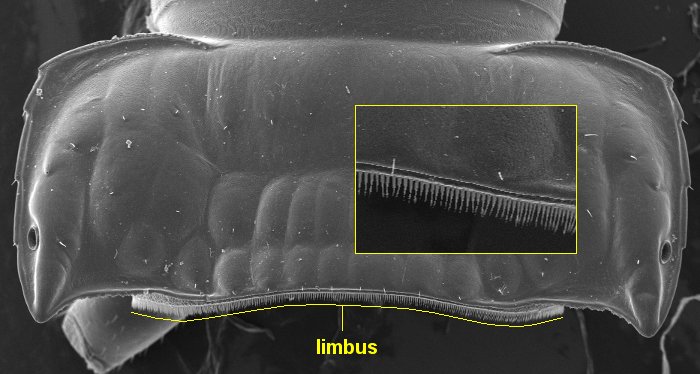
Dorsal view of ring 12 metazonite of Gephyrodesmus arcuatus (Dalodesmidae),
New South Wales and Victoria, Australia. Inset shows magnified view.
The limbus is interesting because it seems to vary a lot between different groups of Polydesmida. However, you cannot see the variations clearly unless you examine the limbus under very high magnification. Many descriptions of Polydesmida species do not mention the limbus. It is reported to be completely absent in species of the family Oniscodesmidae.
Attems (1937) summed up the limbus this way, and not much has changed in 70+ years:
Der Hinterrand der Metazoniten trägt einen Fransensaum von einfachen schmal dreieckigen Spitzen oder mehrspitzigen Plättchen, die manchmal kleinen Tannenbäumen ähneln; auf ihre Gestalt ist erst bei wenigen Arten geachtet worden und sie wären ausgiebiger als bisher zur Systematik heranzuziehen.
The hind margin of the metazonites bears a bordering fringe of simple, thin, triangular points or multi-pointed platelets, which sometimes resemble little Christmas trees; their form has been noted to date in only few species, and they could usefully be included in systematic studies.
Below is an image gallery of some limbus 'teeth'. The scale bar in all cases is 0.025 mm.
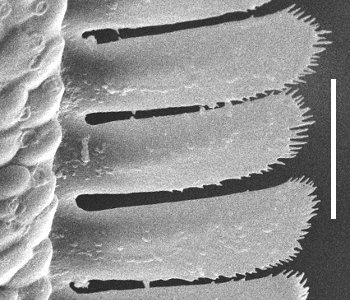 |
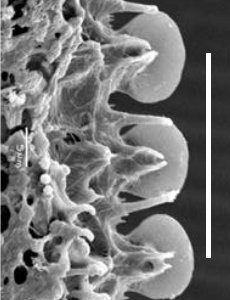 |
Atalopharetra johnsi |
Lobiferodesmus vanuatu |
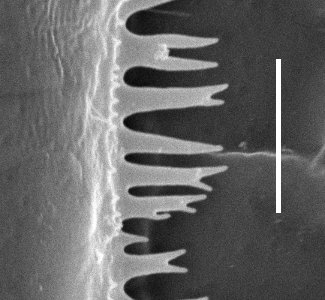 |
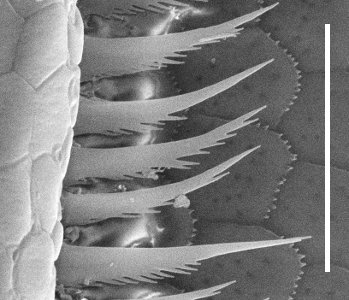 |
Ginglymodesmus tasmanianus |
Lissodesmus hamatus |
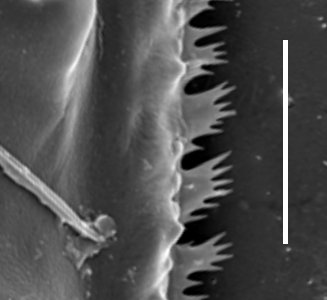 |
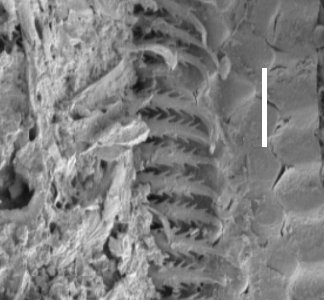 |
Undescribed genus and species |
Asphalidesmus otwayensis |
Attems, C. 1937. Myriapoda. 3. Polydesmoidea. I. Fam. Strongylosomidae. Das Tierreich 68. Berlin and Leipzig: Walter de Gruyter and Co.; 300 pp.
Back to: sculpture
Forward to: setae
